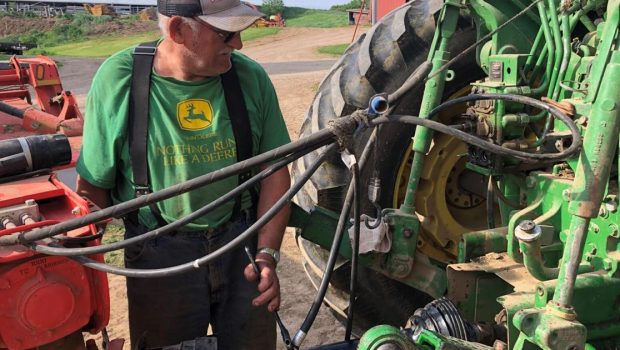Brian Reisinger
For many years on Christmas Day, my dad woke up to a present from the hard Wisconsin winter: cold water flooding our barn.
Late December was when it was cold enough for the mechanisms on our milk cows’ drinking cups to freeze overnight. Water would stream across the barn, pooling as high as 3 inches.
“It was just downright crazy,” my dad said years later, recalling those brutal mornings as he walked across our farm with the snow crunching underfoot. “Then we got smarter.”
Getting smarter meant building a small free stall barn nearby with an outdoor waterer, but it could have been about countless innovations farms such as ours implemented over the years. The problem — for my dad and the thousands of farms the U.S. Department of Agriculture says our country loses each year — is that at some point, technology went from moving small farms forward to leaving us behind.
People are also reading…
Of all the many reasons for our disappearing family farms, one of the least understood is this technological shift affecting every farm in America. It may also be key to saving what’s left.

Jim Reisinger works on machinery at his family's Sauk County farm, which sold its dairy herd in 2021.
Jim MacDonald, a leading research professor at the University of Maryland, called technology “a fundamental driving force” of farmland consolidation. That’s compared to government policies that vary by sector, and economic conditions that fluctuate.
Generally, improving technology has long saved time and labor, freeing up resources to buy more farmland and animals. And consolidation has occurred since the Depression. But technology and consolidation weren’t always so closely linked.
The change began in the early 1980s, as research showed people leaving farms for higher factory wages, MacDonald said. In response, technology swept the country that was primarily focused on reducing the need for labor.
Technology wasn’t aimed at consolidation, MacDonald said, but it enabled it. Smaller farms saw less technology they could afford, or that made sense for their size. Larger farms emerged with a bigger competitive advantage than they already had.
Our family lived this trend, but it took decades to take hold in the heartland. In 1979, shortly after buying out my grandpa, my parents installed a pipeline to pump milk straight from the barn to the milkhouse — instead of carrying buckets by hand.

Other innovations included new silos, a conveyor that took feed out to the cow yard, and a rolling auger I used as a scrawny kid to feed our cows in the barn. All of it cut back on feeding by hand. Eventually a mixer we pulled behind a tractor, and outdoor feedlots, went further.
But we knew a change had begun. By the early ‘90s, all the talk was of milking parlors, facilities that rotated cows through stations, milking more cows in less time.
Dad considered it, but feared the cost. Some farms of various sizes made it work. Others fell under the debt. All the while, dairies got bigger — and fewer.
MacDonald noted that tractors and machinery technology acted similarly across America, with precision agriculture making every acre more efficient, but favoring ever-bigger farms.
To be clear, not all technology did this. Events such as Wisconsin’s Farm Technology Days and Dairyland Expo promoted technology for farms of all sizes. But overall, technology enabled consolidation more than small-farm innovation, on top of economic downturns and other trouble.
In our case, too many tight years led us to sell our dairy herd in 2021. But my parents’ aversion to debt — once a barrier to getting bigger — left us financially strong enough to keep our farm near Spring Green in rural Sauk County. Today my sister and dad raise heifers for larger dairies, as well as beef and cash crops.
Experts from UW-Madison and across the country say that’s the reality for now: farms getting bigger, with a smattering of small operations surviving on a niche. Everything in between is disappearing.
But it’s not over, MacDonald said. Robotic milkers have been cost-effective for some smaller farms. Autonomous vehicles for spraying fields, MacDonald said, could be, too.
“I think we’re at a crossroads,” he said of which way technology will go. “That’s a big open question.”
Where I’m from, more small-farm innovation would be welcome relief for families still holding on. Not to mention kids who want to see Dad earlier on Christmas morning.
Reisinger, of Madison, grew up on a farm in Sauk County. He is president and chief content officer of Madison-based Platform Communications: br@platform-communications.com.








Gloss